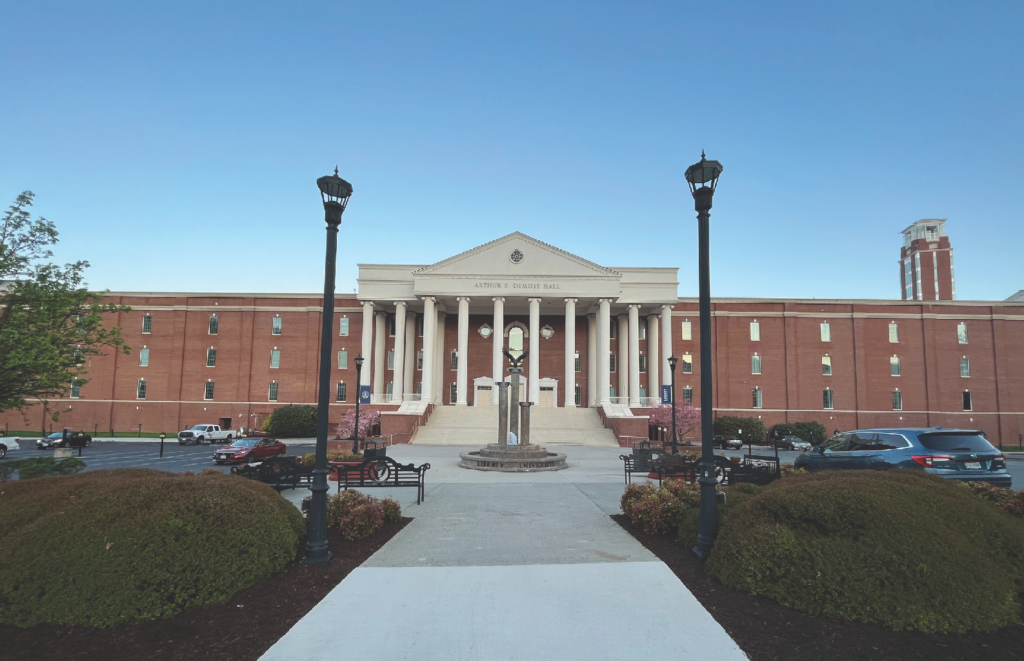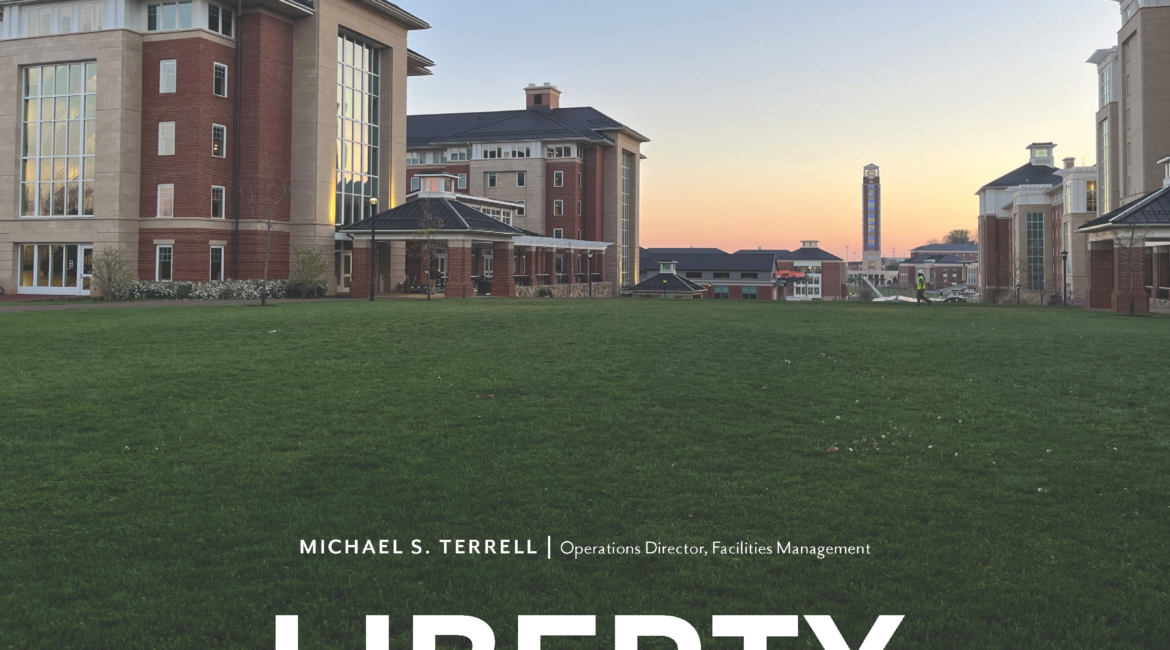Michael S. Terrell – Operations Director, Facilities Management – Liberty University
Written by Neil Cote & Produced by Zachary Brann & Cherie Scott
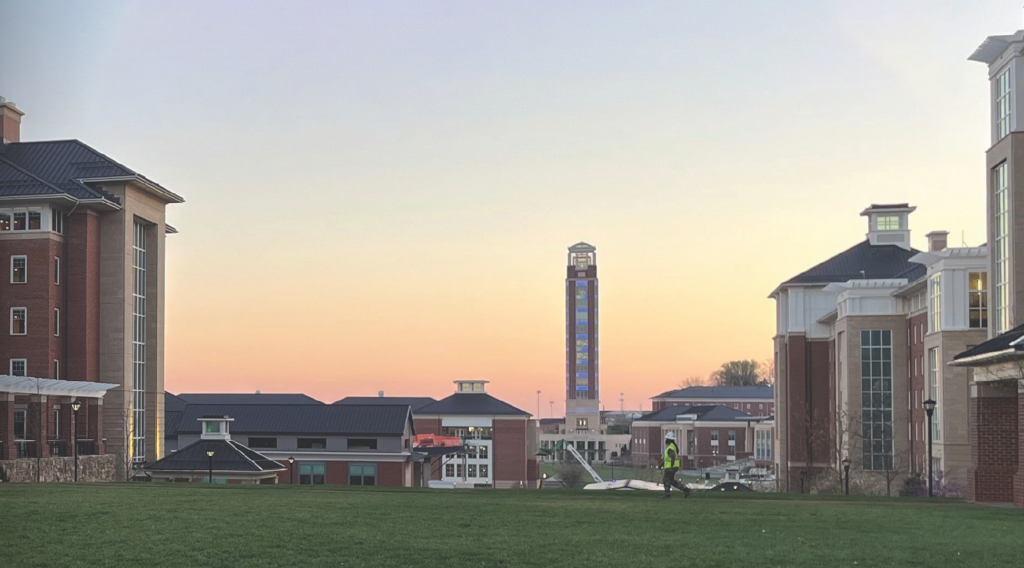
It may be a school that adheres to conservative values and for that Liberty University makes no apologies. But it needn’t cling to some old and very inefficient ways of campus and facilities upkeep.
So, Michael S. Terrell emphasized two years ago when returning to where he had lived, the idyllic locale of Lynchburg, Virginia, this time to direct operations facilities management at the private Christian university founded by the late Jerry Falwell. The campus having expanded to 7,000 contiguous acres with 175 buildings and 7 million square feet serving 15,000 residential students, 115,000 online students and 3,500 faculty, that’s a lot of property to maintain.
Too much, he says, for the vintage 2006 software that the school was using for its computerized maintenance management system. Then there was the matter of the
facilities team aging.
“We have to do more with less and automation is the way to do so,” Terrell emphasizes. “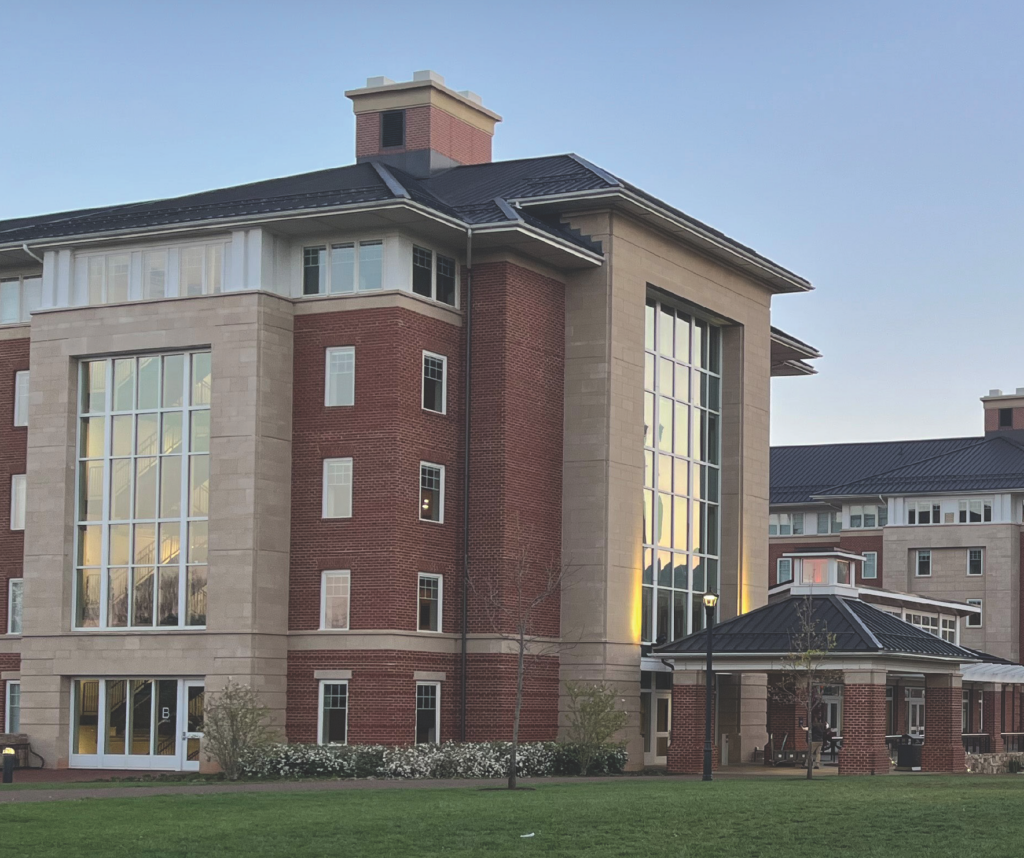
They’re well on their way to doing so, Terrell having introduced an integrated workplace management system—IWMS—that should be fully operational by start of the next academic year. Then there’s been his other initiative of submetering rather than bulk metering utilities, which should save on water, gas, heat and air conditioning.
When Blueprint caught up with Terrell in late winter, he was immersed in those projects and more, including a regular sharing of ideas with other Virginia colleges and universities on automation systems and energy efficiency.
IWMS Spells Efficiency
Much progress has been made on IWMS, Terrell says, but still much further to go with a deadline. They’ll get there by mid- or late summer, he assures, with credit due IMS Consulting and Archibus Inc., the former vendor mentoring the school on implementation of the latter’s IWMS platform.
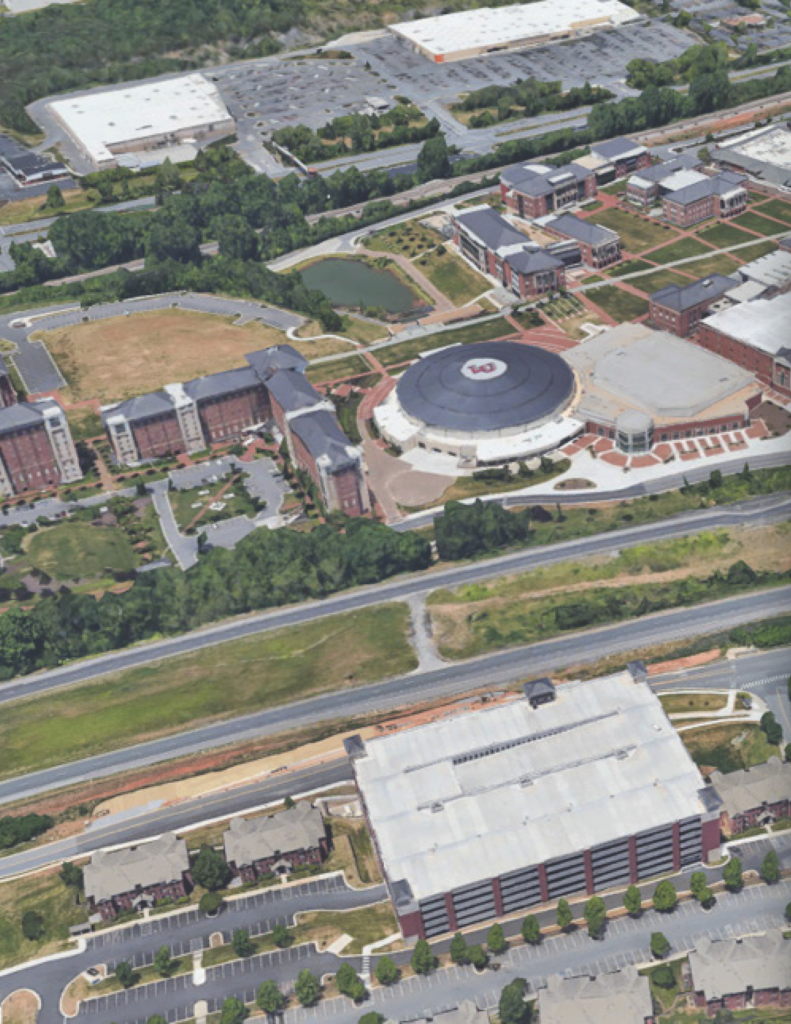 That platform is consolidating all the school’s asset and space information and work-order requests into one system. Limitations on the legacy system have had building information and utility, infrastructure and asset data stored in several silos over multiple platforms and software solutions that neither communicate with each other nor promote integration. Such disparity has yielded incomplete, duplicate and conflicting information with much time and money spent on simplification.
That platform is consolidating all the school’s asset and space information and work-order requests into one system. Limitations on the legacy system have had building information and utility, infrastructure and asset data stored in several silos over multiple platforms and software solutions that neither communicate with each other nor promote integration. Such disparity has yielded incomplete, duplicate and conflicting information with much time and money spent on simplification.
“Technology’s changed so we have a host of different technologies,” Terrell says. “With lighting controls, we go from just the old fluorescent bulb to the online controlled LED systems. Trying to integrate all that and keep track of it has been a major challenge.”
With his eye for efficiency, Michael S. Terrell streamlines facilities management at Liberty University in Lynchburg, Virginia.
As has been trying to rein in energy costs. This rising expense, coupled with government regulation and the school’s sustainability goals, has had Terrell needing to break down the billing for each utility and put those numbers into a centralized database for further efficiency analysis.
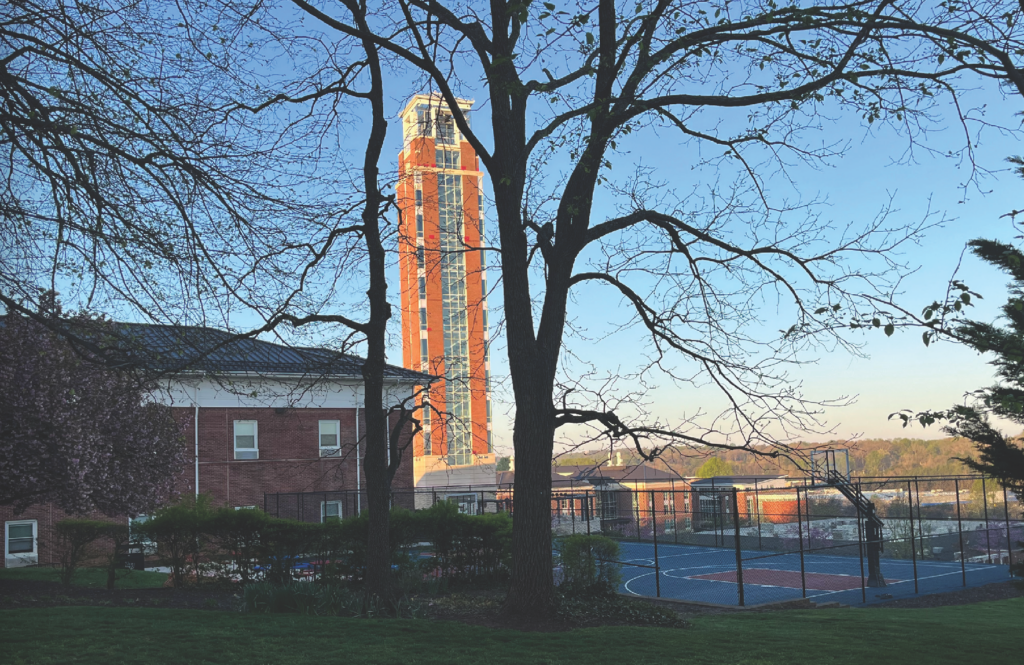 He’s considering companies like H20 Degree, a Pennsylvania operation that provides wireless utility submetering, water leak detection and alarming, wireless thermostat control and utility consumption analysis and reporting to help achieve his goals. While it made its mark on multifamily housing, it’s become a go-to for campus and institutional efficiency. It’s a fairly recent addition to Terrell’s bag of tricks, and he anticipates getting precise information on utility usage in each facility.
He’s considering companies like H20 Degree, a Pennsylvania operation that provides wireless utility submetering, water leak detection and alarming, wireless thermostat control and utility consumption analysis and reporting to help achieve his goals. While it made its mark on multifamily housing, it’s become a go-to for campus and institutional efficiency. It’s a fairly recent addition to Terrell’s bag of tricks, and he anticipates getting precise information on utility usage in each facility.
Tradespeople Need Apply
It’s a different challenge on the personnel front with so many of the workforce nearing the end of their tenure. Like so many other leaders in his industry, Terrell laments the shortage of young people entering the trades. He’d like to get the word out that working with one’s hands can be rewarding, especially in the foothills of the Blue Ridge Mountains.
“We’ve got an aging workforce, like everybody else, and we’re not going to make it over the next 50 years with the folks we have now,” Terrell says. “We’ve got to bring in new talent and pass along our knowledge. But we can’t just teach them how to do what we’re used to do. They need to use the tools that are just coming on board and be on the lookout for the next innovation.”
As for the 60-something Terrell, he expects to be around for a couple more years. It’s an appropriate way to conclude what’s been a fulfilling career since his 1977 graduation from North Carolina State University with a degree in engineering operations.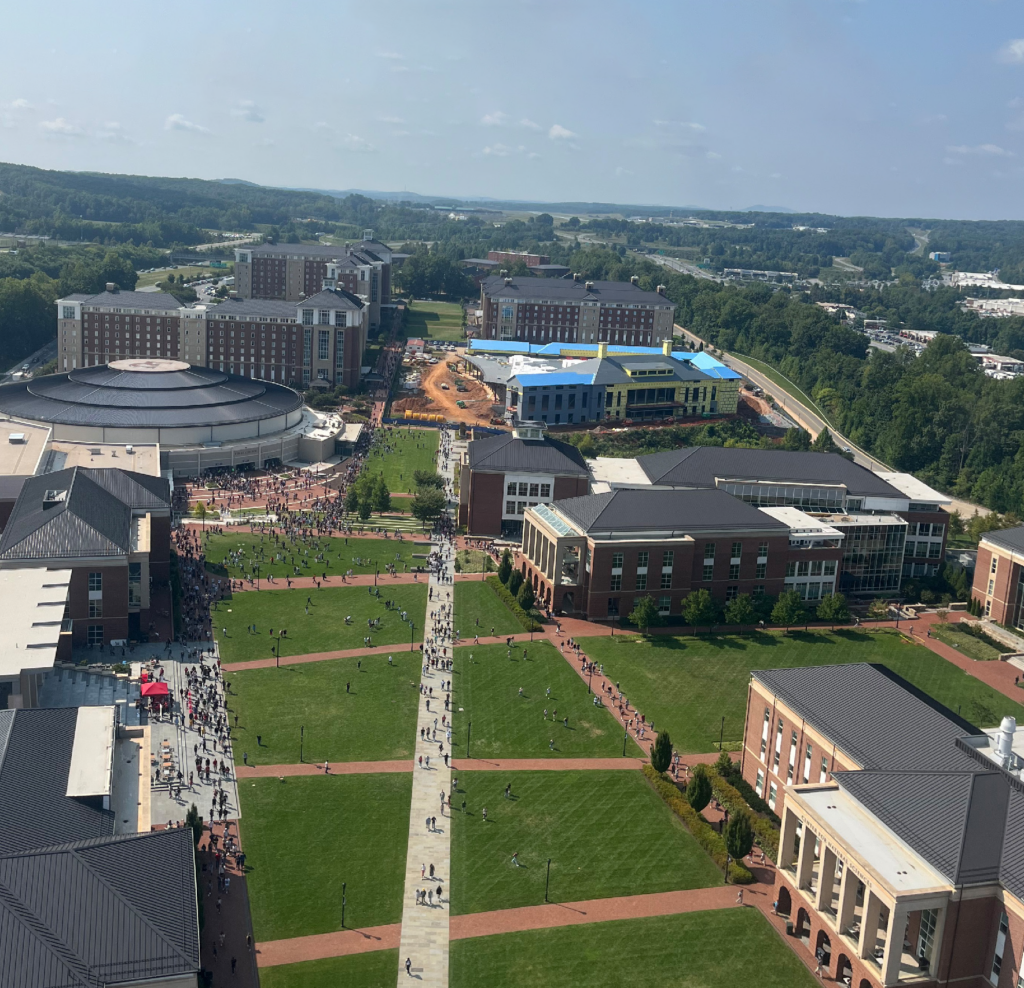
Many of the time he spent in engineering and project management, including a 2003-to-2017 stretch with Framatome, a French headquartered nuclear reactor designer and builder with a satellite in Lynchburg. The nuclear industry retrenching, Terrell was among many engineers furloughed but he landed on his feet, moving to the Williamsburg area to be a senior project manager at the College of William & Mary from 2018 to 2021.
Heart and home was still in Lynchburg. Though he bought a second house in Williamsburg, he spent much of his weekends driving the 185 miles between the two cities. The family having a special-needs daughter living in Lynchburg and Terrell still having a management consulting firm there, his intent was to return and he finally did when Liberty University called him home in August 2021.
“It’s a refreshing change, coming to a private faith-based school from a state school with so many rules and regulations to follow,” he says. “Here the guiding principle is being a good steward of God’s resources.”
He’ll share that gospel, albeit in a secular manner through an initiative he implemented last year with counterparts at William & Mary, the University of Virginia, Virginia Commonwealth University and any other in-state schools that join the so-called Virginia Universities’ Community of Practice.
Its objective is to meet at least once a year to share insight on any topics of mutual concern. Last fall’s meeting focused on energy management with emphasis on utility submetering, consumption tracking, automated systems and major projects in general.
“We’re all looking for ways to improve our efficiencies,” Terrell says. “Automation can do the heavy lifting but only if we have the right systems and know how to use them.”
